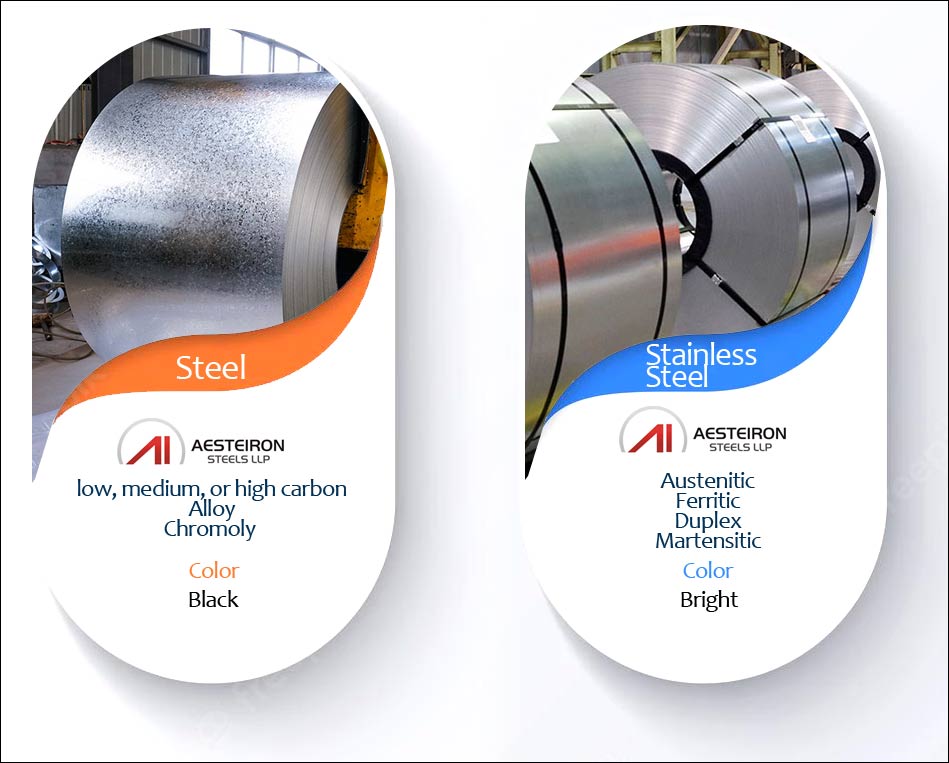Difference between stainless steel and steel
Do you want to understand the difference between stainless steel and regular steel? If so, you're in the right place. This article will break down the key differences between these two popular metal alloys, helping you make an informed decision when choosing the right material for your project.

**Introduction**
Stainless steel and regular steel are both types of metal alloys made primarily from iron, but they differ significantly in their composition, properties, and applications. While both are widely used in manufacturing, construction, and daily life, each has unique characteristics that make them suitable for different purposes.
**Key Differences Between Stainless Steel and Steel**
1. **Cost and Value**
Steel is generally more affordable than stainless steel, making it a popular choice for large-scale projects where cost is a major factor. However, stainless steel offers a more attractive finish and is non-reactive, which makes it ideal for environments where durability and aesthetics matter.
2. **Properties**
Steel is magnetic and can be categorized into low, medium, or high carbon steel based on its composition. It conducts heat well and is commonly used in structural applications. On the other hand, stainless steel is typically non-magnetic (with some exceptions), harder, and less ductile. It also has lower thermal conductivity compared to regular steel.
3. **Aesthetics**
Stainless steel has a sleek, shiny appearance that gives a luxurious look. Its natural luster makes it a favorite in design and architectural applications. In contrast, steel usually has a more matte finish with a duller sheen, which can be enhanced through coatings or finishes.
4. **Chemical Composition**
Steel is made by combining iron with carbon and removing impurities like sulfur, phosphorus, and manganese. Stainless steel follows a similar process but adds chromium, nickel, nitrogen, and molybdenum. The presence of at least 10.5% chromium is what makes stainless steel "stainless" — it forms a protective oxide layer that prevents rust and corrosion.
5. **Maintenance and Self-Healing**
One of the biggest advantages of stainless steel is its low maintenance requirement. The chromium-rich oxide layer helps protect the surface and even allows for self-healing in case of minor scratches. Regular cleaning with mild soap or a soft brush is usually enough to keep it looking new. Steel, however, is more prone to rust and requires more frequent maintenance, especially in humid or corrosive environments.
6. **Corrosion Resistance**
Stainless steel is highly resistant to corrosion due to its chromium content. However, it's not completely immune — if the protective layer is damaged, it can still corrode. Steel, on the other hand, lacks this protective layer and is more susceptible to rust, especially when exposed to moisture and oxygen over time.
**Conclusion**
In summary, while both stainless steel and steel are valuable materials, they serve different purposes. Stainless steel offers superior corrosion resistance, a better aesthetic, and long-term durability, but comes at a higher cost. Steel, though more affordable, is more prone to rust and requires more care. Understanding these differences will help you choose the right material for your specific needs. Whether you're building something functional or designing something elegant, the right choice depends on your priorities.
Injection Molding Service,Aerospace Connector,Connectors Injection Molding,Electric Tools Plastic Part
Wisegroup Precison Mold Ltd , https://www.wisegroupasia.com
